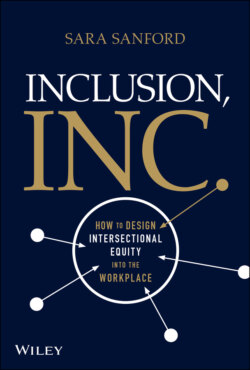Читать книгу Inclusion, Inc. - Sara Sanford - Страница 39
From Baseball to Business
ОглавлениеIn her research, Woolley had seen that managers tended to think of team performance as the average of each individual member's performance. Just as baseball clubs had historically depended on a narrow definition of what “success” looked like, though, managers only seemed to recognize and select the same kinds of all-stars, over and over again. Traits such as extroversion or public speaking were easily recognized as desirable, while other traits, such as emotional intelligence or long-term thinking, tended to go unnoticed. This often led managers to build teams with strengths that were redundant, rather than complementary.
Woolley wanted to test how groups stacked with these traditionally recognized all-stars performed as a collective, compared to teams with more diverse skill sets.24 Woolley brought teams into a lab and studied how they, as groups, tackled a series of tasks, such as playing checkers, solving logic puzzles, and debating the ethics of complicated moral problems. She gave each group a collective intelligence (CI) score based on how well they navigated these challenges. She also assessed each group's average intelligence (AI), meaning she averaged the individuals' scores across metrics traditionally considered to be indicators of success.
The groups that had the highest CI scores, meaning they performed the best on this series of tasks, were more diverse, had higher social sensitivity scores, and took steps to ensure that everyone in the group had a chance to contribute. The groups with the highest AI scores performed worse.
The same groups were then given a more complicated second round of tasks. Those groups with higher CI scores again outperformed groups with high AI scores in these more challenging scenarios.
Wooley concluded that when complementary intelligences were combined, they amplified one another, and outperformed teams with higher average scores in historically valued areas. While one team member may have had a technical understanding of a problem, another may have had unique experiences that revealed certain solutions wouldn't work in certain contexts, and a third may have had the social intelligence to make sure the two of them communicated their ideas clearly to each other. Alone, these forms of intelligence weren't as effective as when brought together. Just as players who got on base helped home run hitters score two runs instead of one, those with undervalued talents brought the intelligence of the collective to its full potential.
The power of a diverse collective has proven key to helping ball clubs and businesses multiply their impact. As a society, what are we missing out on by overlooking the undervalued? One Wall Street pacesetter believes that harnessing the power of the collective could have kept us from reliving the largest financial crash since the Great Depression.
